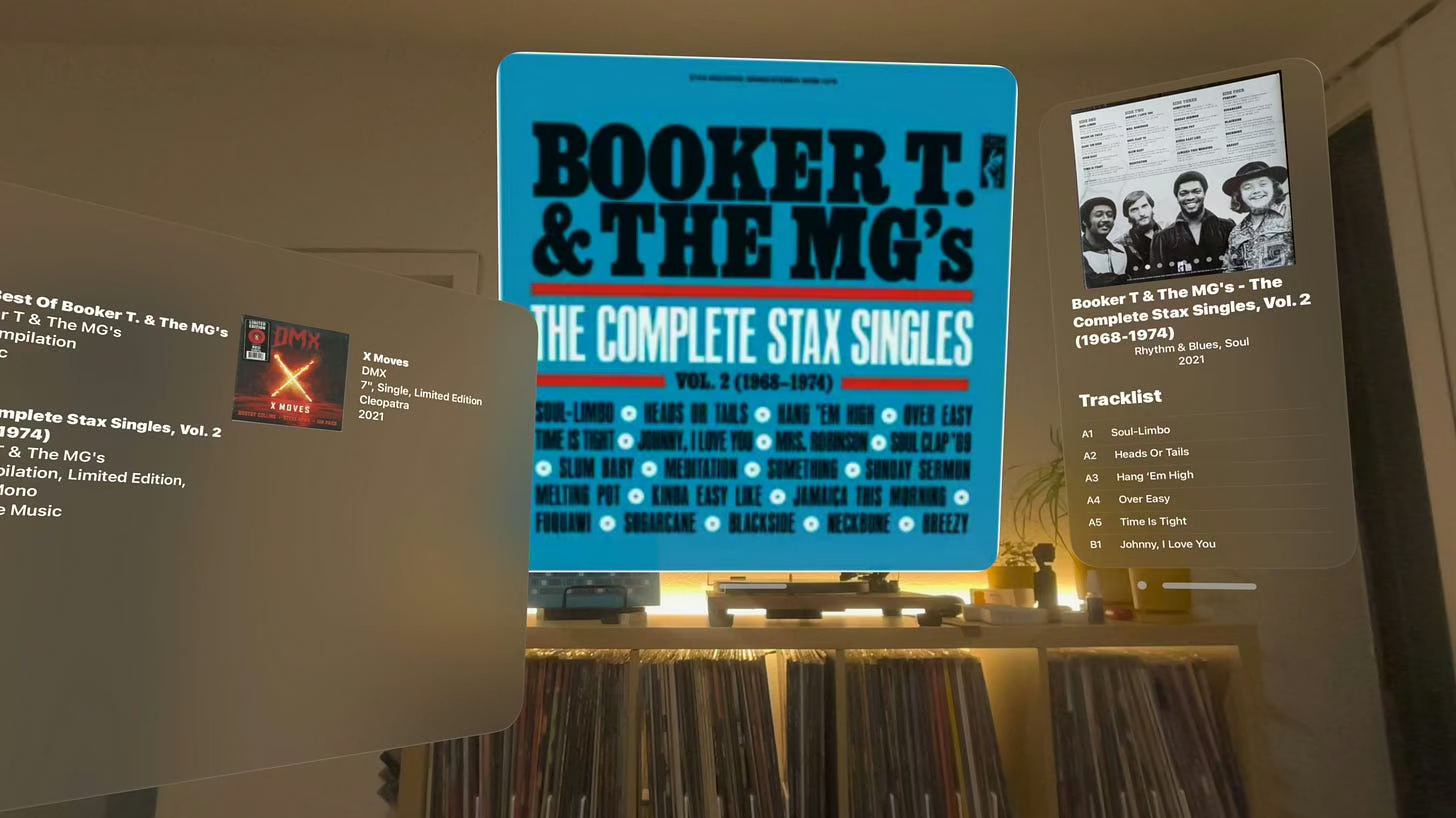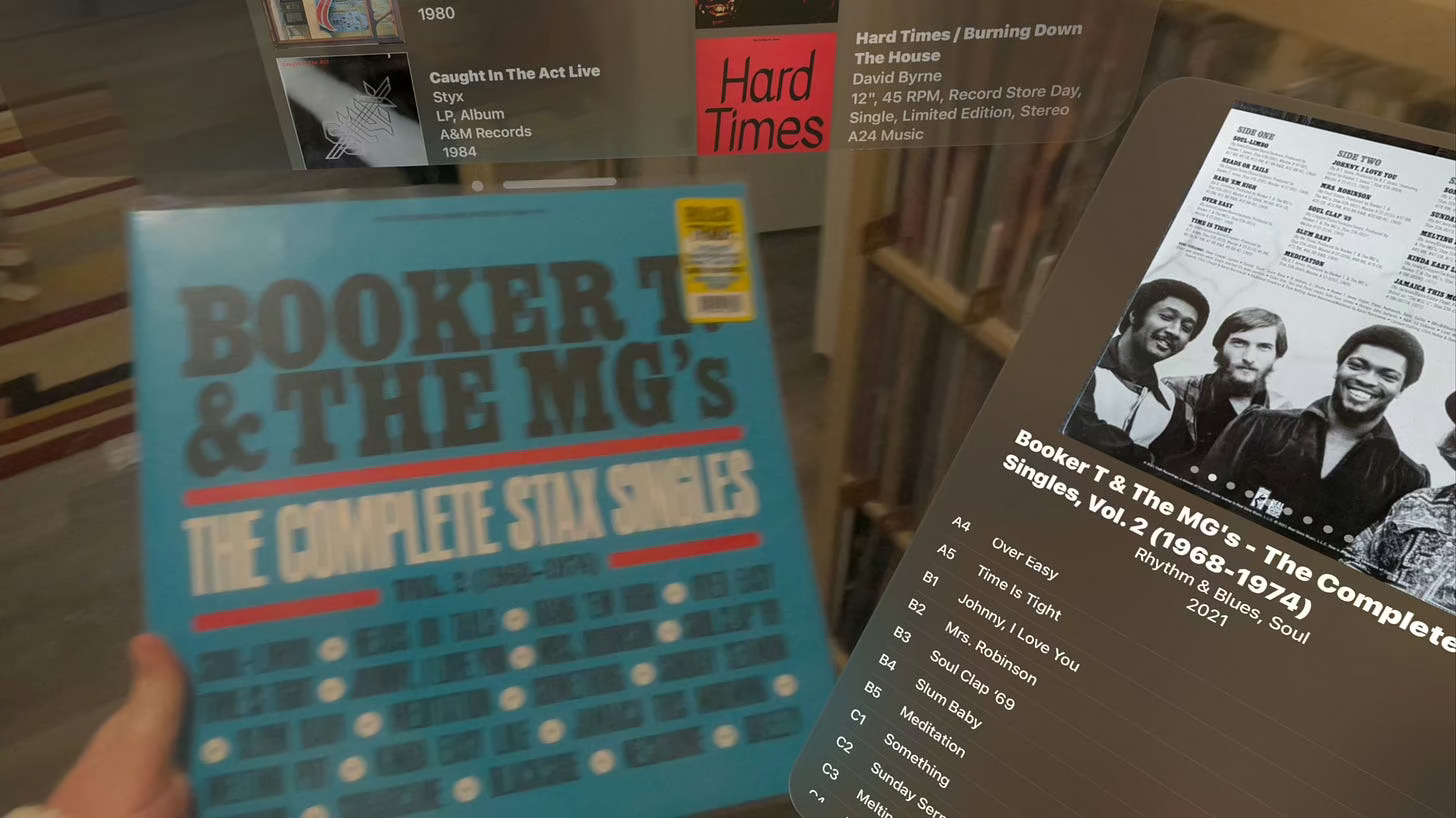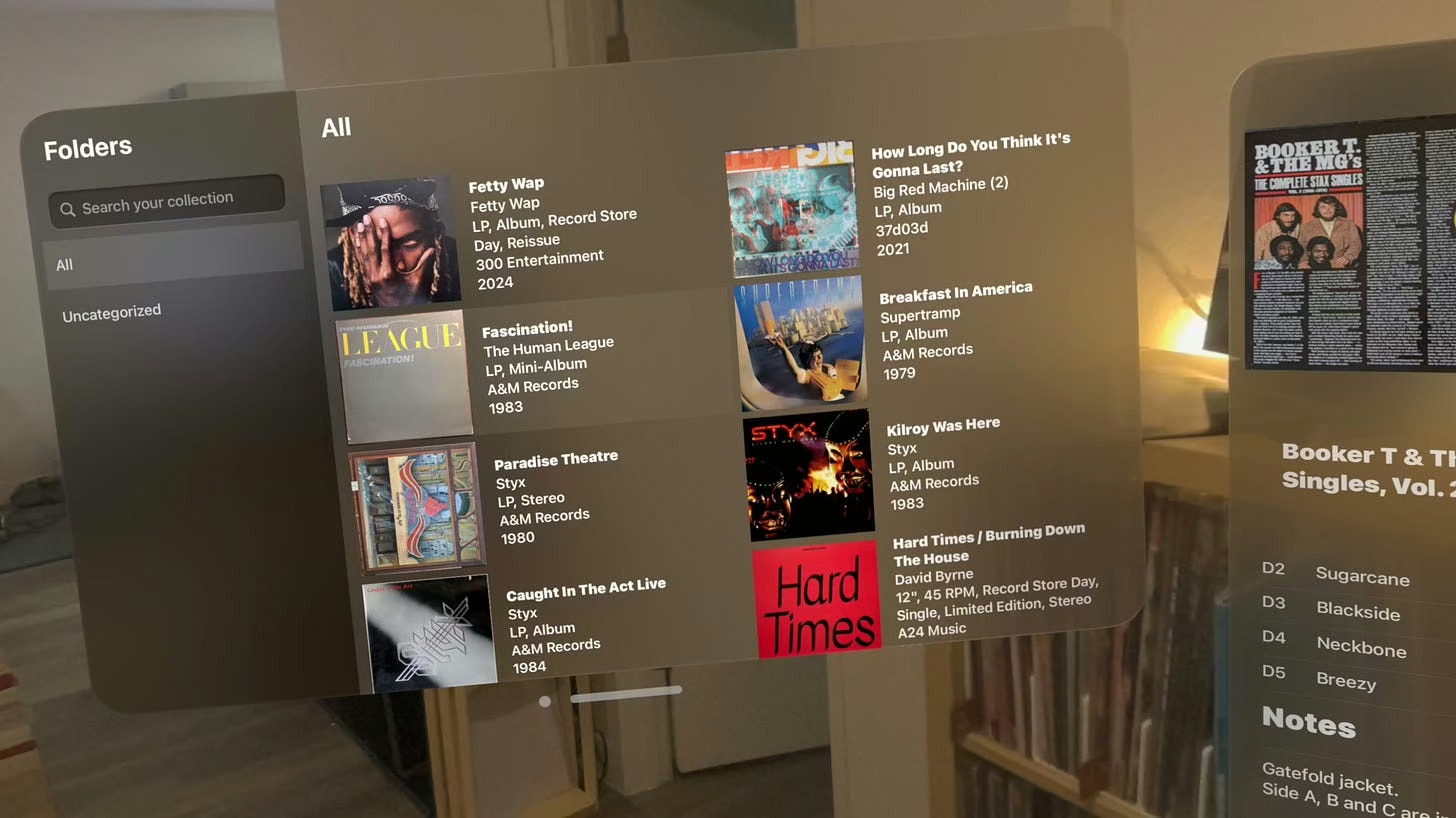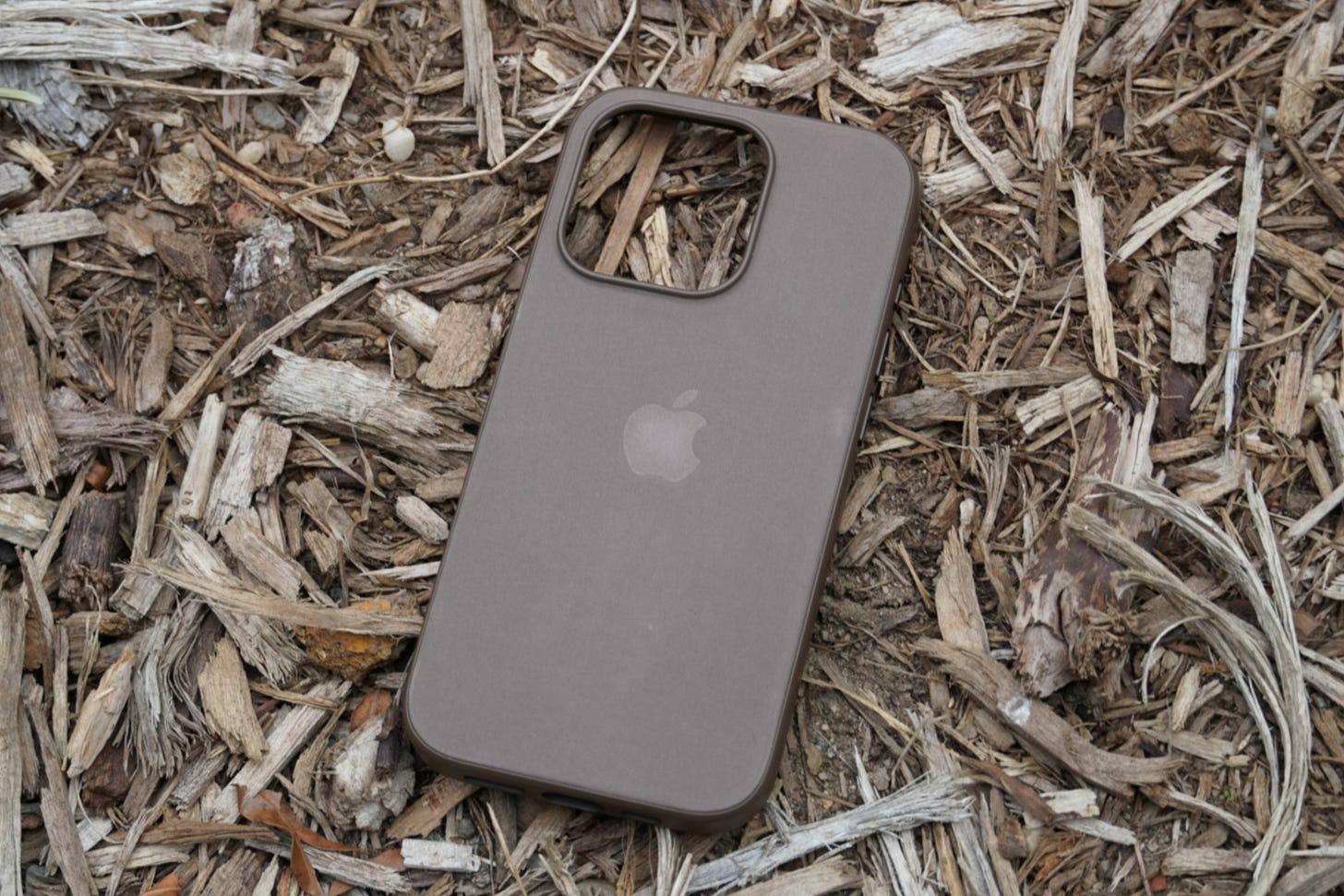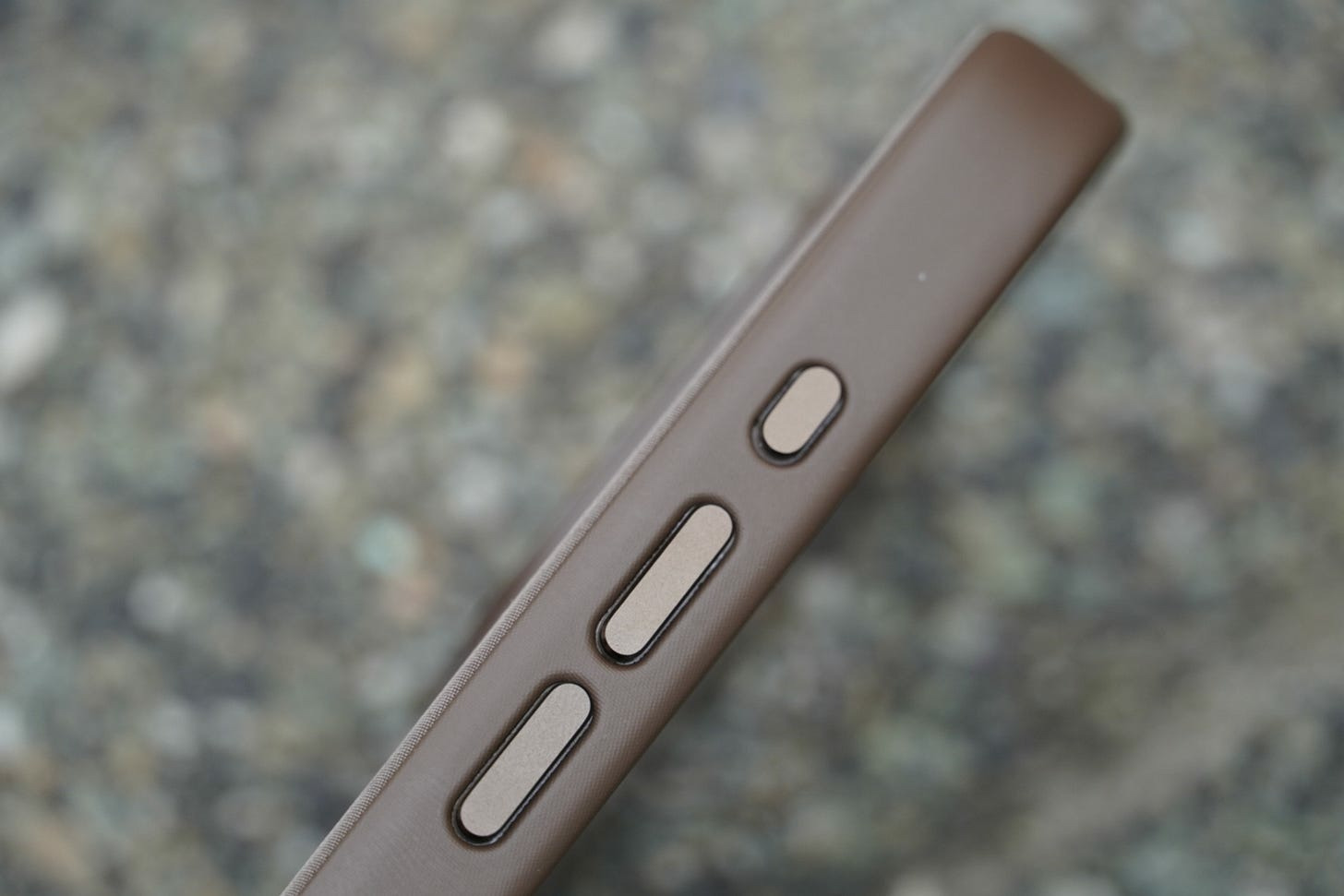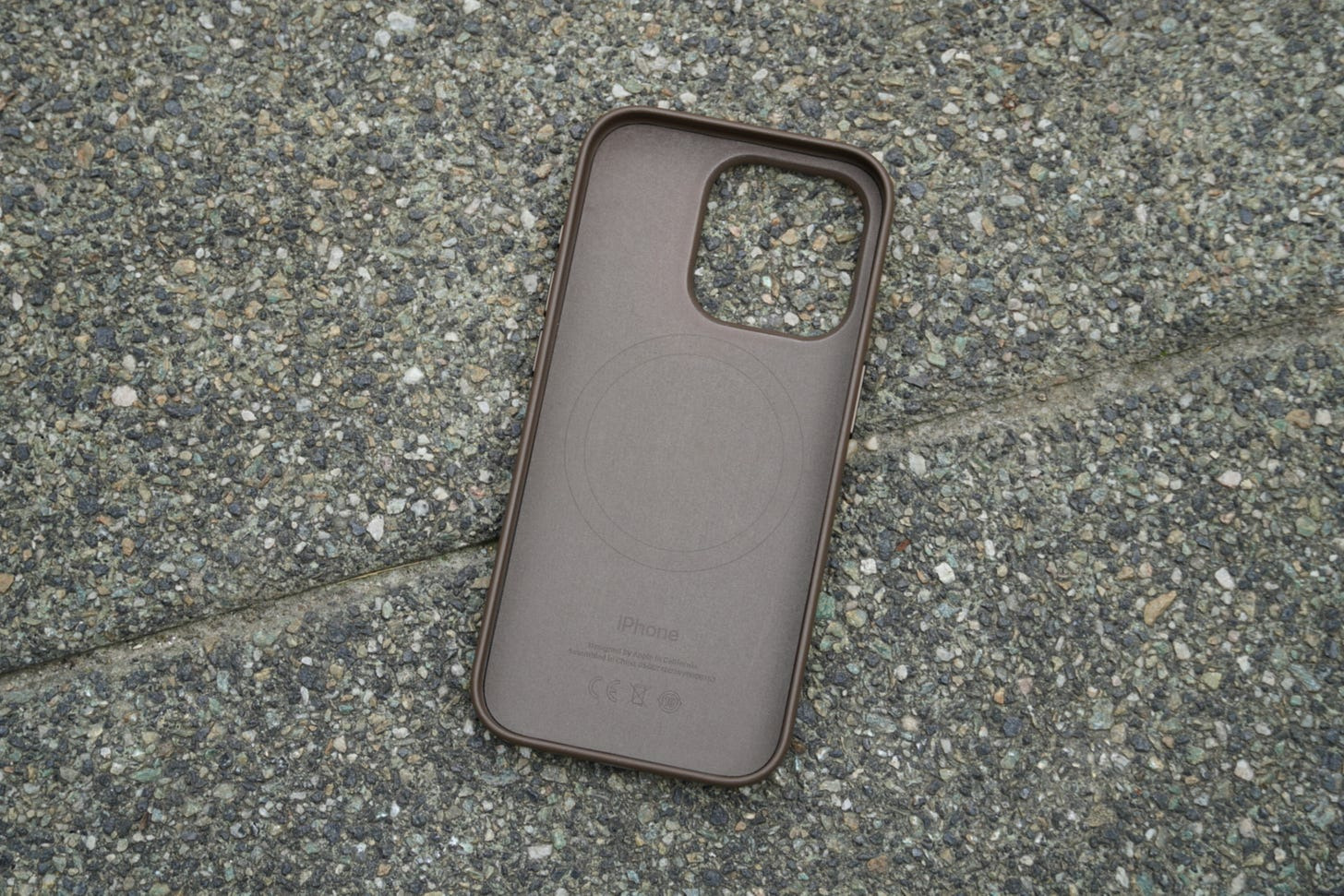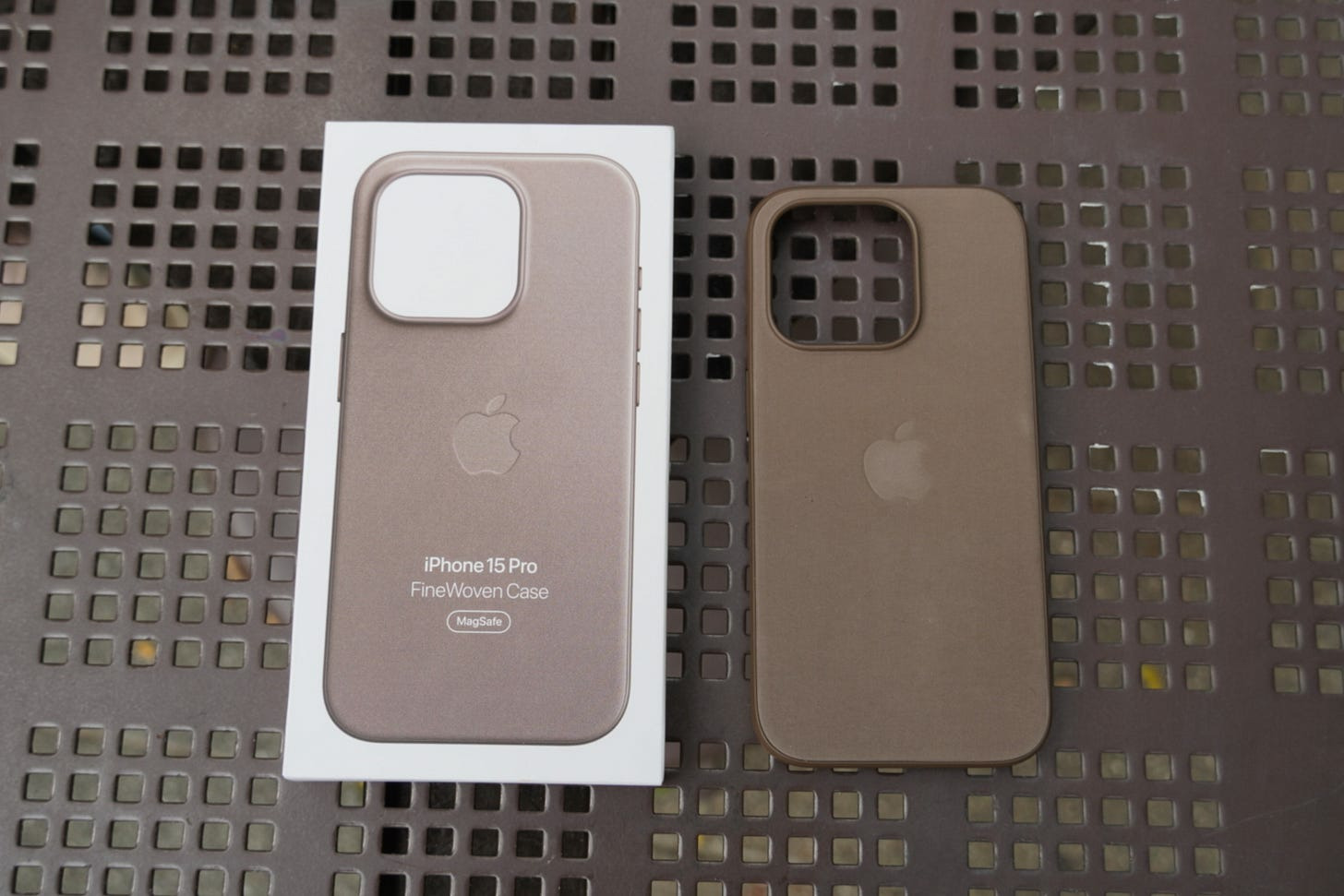🍎 Apple
Vinyl Vision for Apple Vision Pro is a weird mix of analog and digital
I’ve spent the last few weeks revamping my vinyl collection at home. I bought a new Ikea Kallax shelving unit for storage, wired up multi-room RCA audio, and updated my Discogs collection. That was the end of it, until I stumbled upon the Vinyl Vision app on the App Store. Essentially, it’s a clean visionOS app that lets you interact with your Discogs library, and it’s the perfect paradox of how the lines between analog and digital could be blurred if mixed-realty devices like Apple Vision Pro take off.
For those not as ingrained in 21st century vinyl culture, Discogs is an online database, catalog, and marketplace for vinyl pressings. There are a surprising amount of different pressings and versions of a particular album available on vinyl, and Discogs helps you keep track of them all. It’s an inventory system, appraiser, storefront, tracklist finder, and a whole lot more. But the website is quite utilitarian, and it’d be tricky to navigate it using the eyes-and-hands control of Vision Pro.
That’s where Vinyl Vision comes into play. It’s a $5 purchase on the App Store that visionOS-ifies Discogs. With floating windows and easy gesture navigation, the app’s developer explains that it’s supposed to turn your database into “a virtual showcase,” per its description. So, I bought the app and gave it a try, like any vinyl-lover with a Vision Pro would.
The app, which integrates with the Discogs API, is fairly limited. It preserves your collection’s organization and folders, and includes the album information, tracklist, album art, and notes for each pressing.
However, it’s just a viewer. There’s no way to add a record to your Discogs collection from Vinyl Vision, which is a disappointment. That limitation means Vinyl Vision can’t completely replace my smartphones or MacBook for Discogs management, and the app just might’ve if adding pressings was possible.
It’s weird to enjoy such a physical and intentional hobby through the lens of grainy passthrough video.
I also can’t help but wonder what it would be like if Vinyl Vision could access Vision Pro’s cameras — it would theoretically be able to scan a barcode of a record in your hand and add it to your Discogs collection with virtually no manual hassle required — but Apple doesn’t allow third-party visionOS devs to access the cameras, so it’s just a pipe dream for now.
I’m also torn on whether this strangle combination of analog music listening and digital music cataloging is fantastic or outrageous. On one hand, you do feel more immersed in your database, as you can throw a picture of your now-playing record on your wall or browse your collection on a screen larger than your TV. It also gets a phone or laptop out of your hands, which frees them up for flipping records and moving the needle.
But on the flip side, it’s weird to enjoy such a physical and intentional hobby through the lens of grainy passthrough video, and with a heavy VR headset strapped to your face. These two experiences shouldn’t blend together, although they seem to better than you might expect. As any Vision Pro user probably knows, the Light Seal has a tendency to break immersion, but Vinyl Vision is a lot more practical with it removed.
For now, I’ll probably stick toward listening to records without Vinyl Vision, at least most of the time. If I do find myself ever stuck not knowing what to play or needing to change things up, I’ll absolutely use Vision Pro to peruse my collection. And in the future, I could really see use cases like this take off when the form factor of devices like Vision Pro become smaller, lighter, and less obtrusive.
Apple FineWoven first impressions: A cool material likely unfit to replace leather
Apple announced the iPhone 15 series last week, and with it, discontinued leather cases and accessories as part of its environmental initiatives. Leather served as the more premium option in Apple’s accessory lineup, with silicone options serving as a slightly cheaper and much more colorful alternative. Apple is ushering in FineWoven, a new microtwill material, as its new premium accessory option ahead of the iPhone 15 lineup’s debut on Sept. 22.
Surprisingly, Apple is selling FineWoven cases days before the official iPhone 15 release date. You can only get them at Apple Stores for now, and Apple employees at the flagship Fifth Avenue store in New York City said they wouldn’t officially be available until this Friday. Alas, I was able to snag one at a retail store in Queens, NY via online order pickup. I’ve spent about two days with the Apple FineWoven case for iPhone 15 Pro — though I can’t really use it, since I won’t be getting an iPhone 15 until release day.
Look and feel
A really nice texture, but a questionable appearance
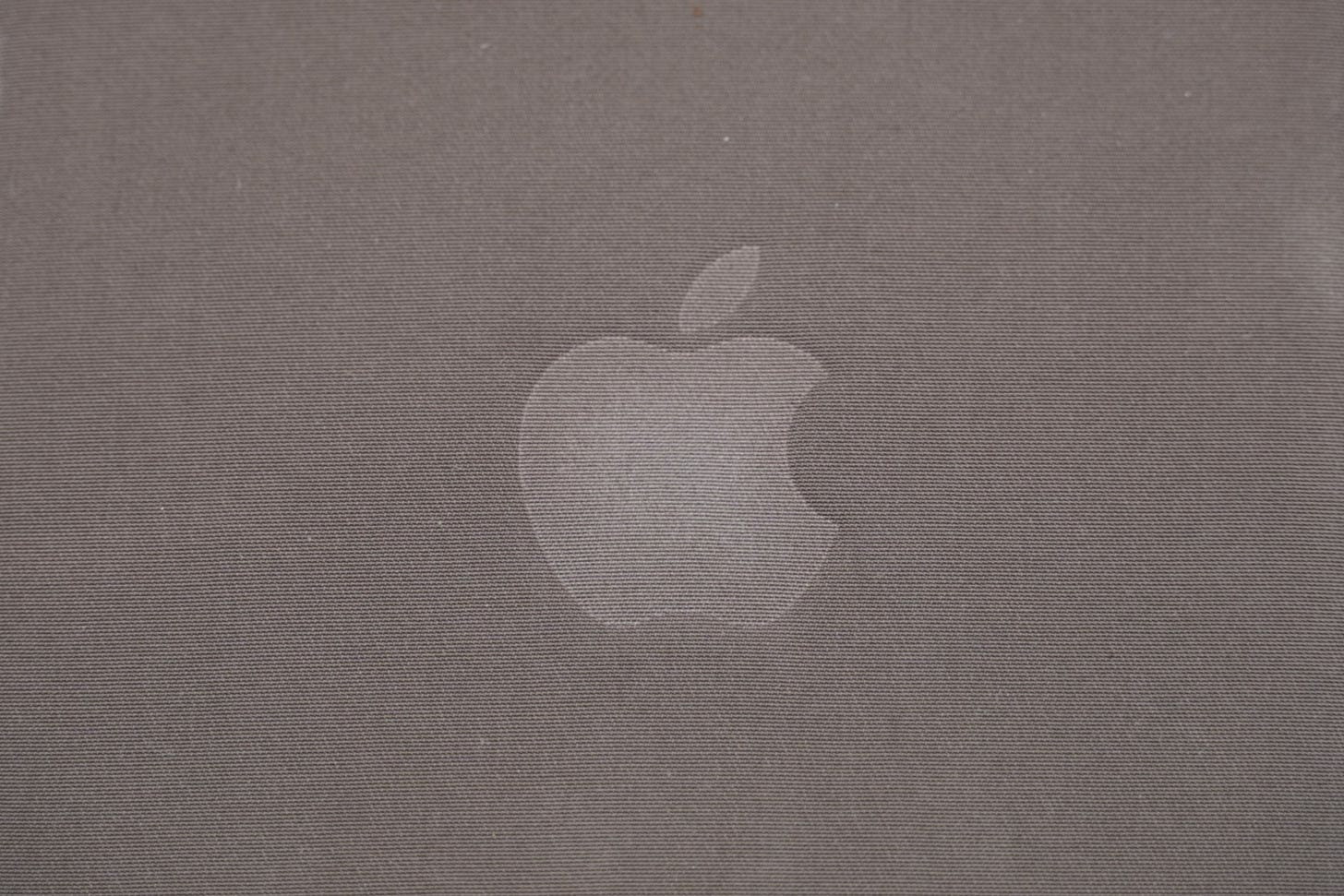
Apple says that FineWoven has a suede-like feel, and I’ve seen others describe the material as denim-like. I’d say it feels most like felt, but however you classify it, FineWoven feels ultra-soft and satisfying. It makes a scratching sound when you rub your fingers across it that you’ll either find pleasing or extremely uncomfortable. YouTuber Aaron Zollo described it as like the sound of scratching a windbreaker or raincoat in his hands-on, and I completely agree.
The sides of the case feel most like leather, and it’s made out of FineWoven material that’s even finer than the back of the case. It looks quite like leather, too, but you’ll easily see the FineWoven weaves while taking a closer look. This is the premium part of the case, with metal buttons that are colored to match the general hue of your FineWoven case. I chose the Taupe color, and it definitely looks darker than the stock images available on Apple’s online store. Your results might vary with other colors, though.
All of this doesn’t really matter to me, because there’s one key reason I can’t daily drive this case. The color of the FineWoven material isn’t consistent across the back of the case. Some spots will look darker than others, some will look lighter. I noticed this right after unboxing the case, so it wasn’t anything I got on the material. But I do think this is something that will get worse over time, as wear and tear further changes the consistency of the FineWoven case’s color.
Durability
Impossible to say at this stage, but I have my doubts
A lot of people are wondering whether Apple FineWoven will be durable over time, and that’s something I can’t possibly comment on now. However, I do have my doubts based on the overall build of the case. Even on the MagSafe ring — which includes the full alignment array, though the middle line is not accentuated — the back of the FineWoven material is extremely thin. There’s a lot of flex as a result, and it feels like I could snap the case in half with ease.
It’s important to note that an iPhone will give the case more structure, but FineWoven still feels flimsier than silicone or leather. I’ve seen Apple cases made of those materials deteriorate terribly over time, so it’ll be interesting to see how FineWoven fares.
Is FineWoven worth buying?
I’m really intrigued by FineWoven, and I want to like it. But right now, I have massive concerns about the material’s ability to replace leather and even silicone. The first Apple FineWoven case seems flimsy and doesn’t feature consistent color. I’ve never recommended a first-party Apple case, and that’s because third-party options are typically a better value. That isn’t changing, even with the debut of FineWoven.
